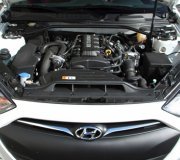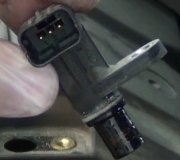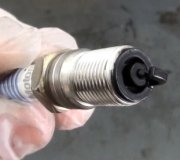ELECTRONIC IGNITION SYSTEM
Samurai, Sidekick & Swift SOHC
The electronic ignition system consists of a distributor which utilizes a pick-up coil and reluctor to produce ignition pulses through the ignitor. Ignitor is also located within the distributor.
Power for ignition coil and ignitor is provided from fuse box 15-amp fuse (20-amp on Swift SOHC), which receives power when the ignition switch is in the ON position. Ground circuit for ignition coil is regulated by the ignitor. As the rotating reluctor passes pick-up coil pole piece, an alternating current is produced. The ignitor uses this alternating signal to determine when to ground and open primary ignition circuit.
When ignitor opens ground circuit for primary ignition, the magnetic field around ignition coil windings collapses, producing an induced high voltage surge which is used to fire spark plugs.
Swift DOHC
The ignition system consists of an ignition coil, a distributor containing a P/M generator crank angle sensor, trigger wheel and rotor, and an ignition power unit which opens and closes ignition coil primary circuit based upon signals from ECM. When power unit removes the ground circuit from primary ignition, the magnetic field around ignition coil windings collapse. This produces an induced high voltage surge which is used to fire spark plugs.
Power for ignition coil is provided from fuse box 20-amp ignition fuse when ignition switch is in ON position. Tachometer signal generated by triggering of ignition coil is monitored by ECM at terminal A12 after signal passes through a noise suppressor filter.
IGNITION TIMING CONTROL SYSTEM
Advance Control
Ignition timing is controlled by ECM based upon sensor input signals. ECM controls ignition timing to a precise point by matching vehicles operating conditions to preprogrammed timing advance specifications stored in ECM memory. Signals generated by crank angle sensor are transmitted to ECM. These signals are modified by input signals from coolant (water) temperature sensor, airflow meter, throttle position sensor, idle switch, vehicle speed sensor and monitored battery voltage.
SPONSORED LINKS
Sunday, May 30th, 2010 AT 5:51 AM



